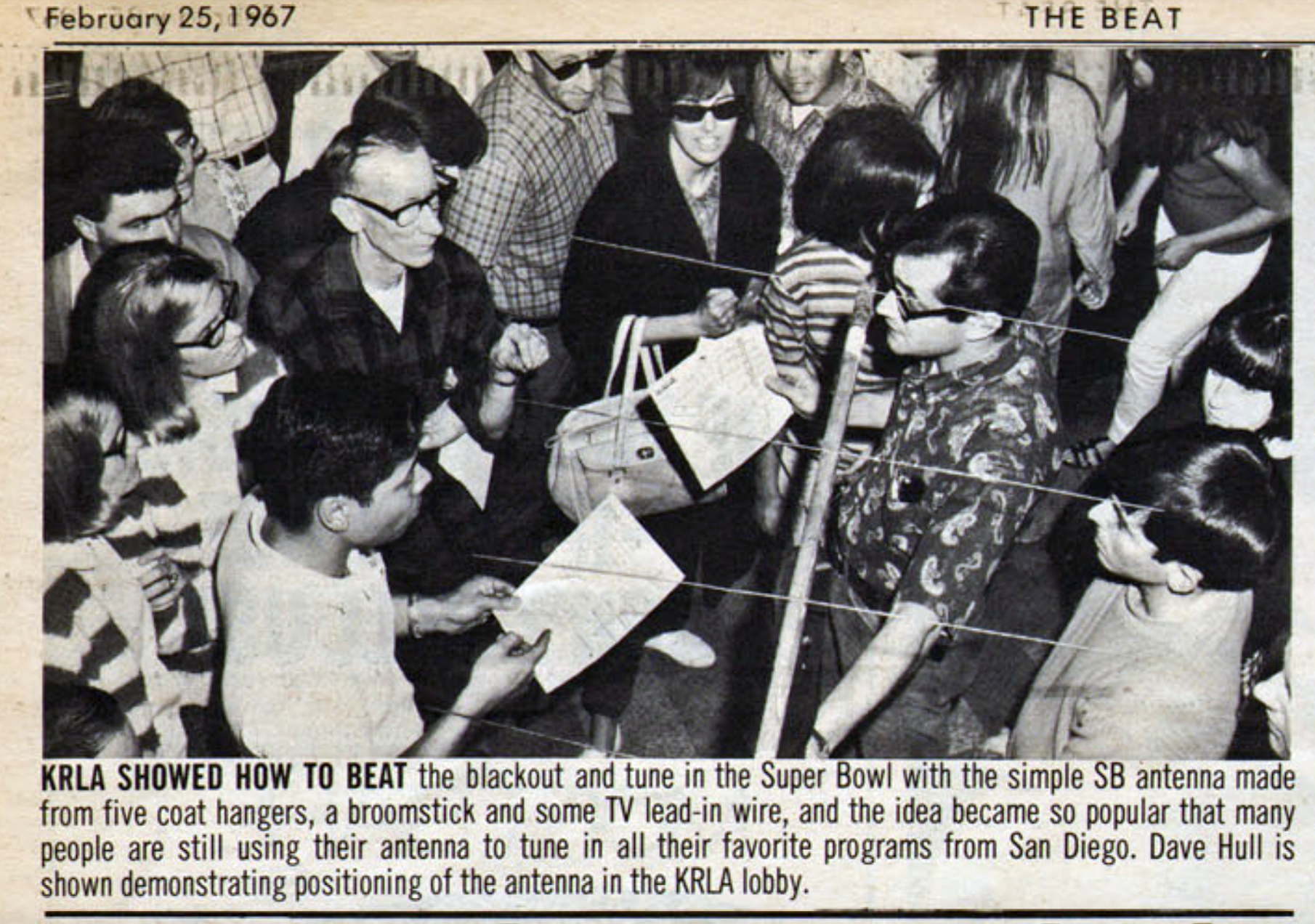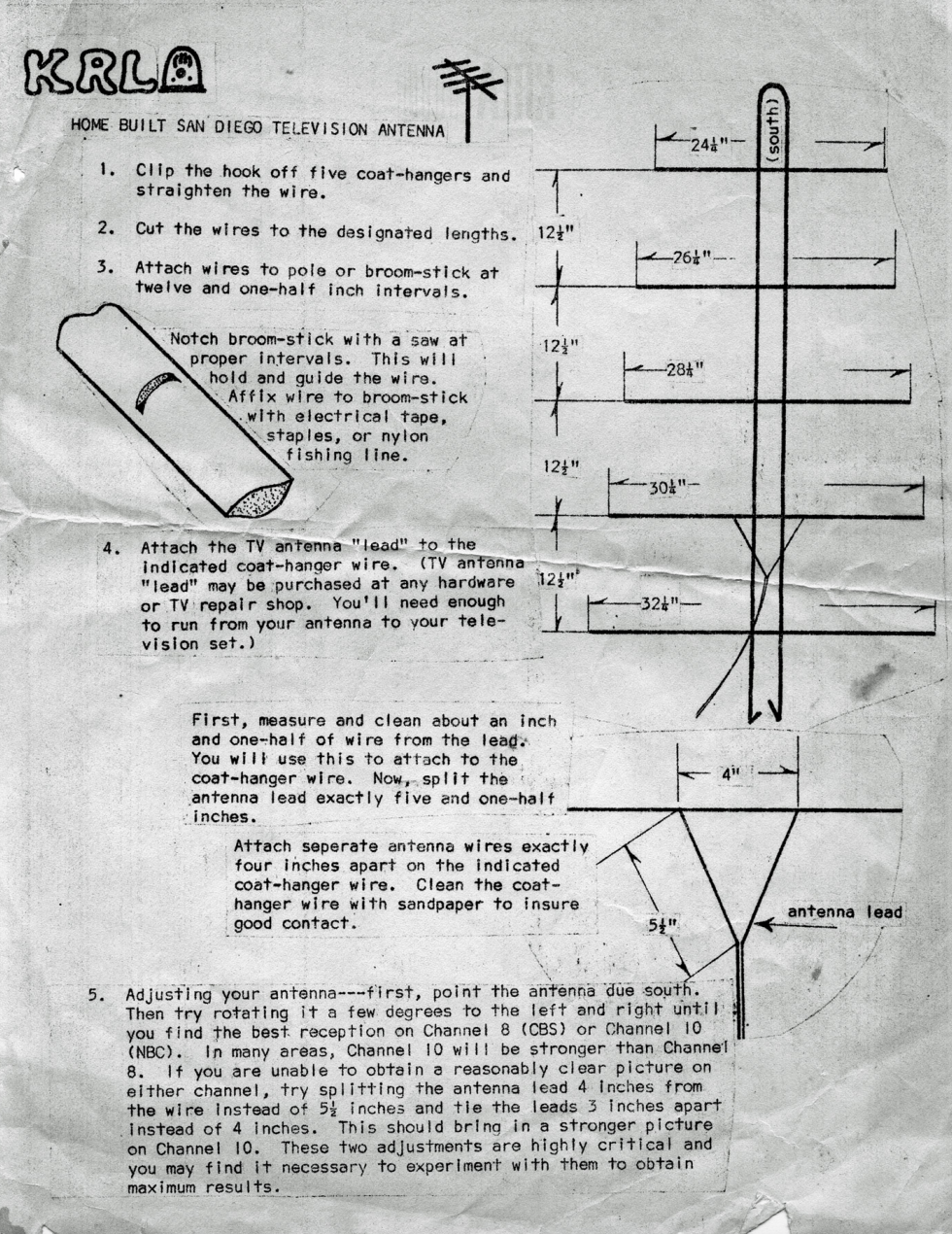KRLA and the Beat history
KRLA personalities
KRLA specialties
KRLA Super Bowl Antenna
A very kind collector of KRLA memorabilia has shared a nifty document: the original plans for KRLA's 1967 Super Bowl antenna. Click the image at left to enlarge a PDF copy.
Why was a radio station passing out instructions for a television antenna?
The first Super Bowl game was held at the Los Angeles Memorial Coliseum on January 15, 1967 between the Green Bay Packers and the Kansas City Chiefs. As the first ever AFL-NFL world championship game, it was simulcast by both CBS and NBC television networks.
Only problem: in Los Angeles the broadcast couldn't be watched on local TV. This blackout involved the entire L.A. Basin, where no TV station could air the historic game. Tickets to the game were twelve dollars each ($85 in today's dollars), and even if it sold out NFL football commissioner Pete Rozelle was adamant that he wouldn't lift the blackout. Some football fans vowed to Bakersfield, Palm Springs, or San Diego and renting a hotel room with a TV to watch the game.
So KRLA stepped in. Program manager John Barrett asked the station engineering staff to come up with a simple, affordable solution. Mimeographed on the back of KRLA letterhead was a one page schematic with instructions on how to assemble a five-element VHF TV antenna out of coat hangers and a broomstick, plus a length of lead-in wire to hook it up to the televsion -- items that anyone would be likely to have around the house, or could buy for cheap. The antenna specs were designed to help users tune in NBC's KFMB-TV Channel 8 and CBS's KOGO-TV Channel 10, both located in San Diego...where, not surprisingly, the Super Bowl was being aired by both channels.

Did it work? Well enough, reported KRLA in its February 25, 1967 issue of the KRLA Beat, to let Los Angeles residents tune in their favorite San Diego programs anytime they wanted. Pictured above is Dave Hull in the crowded lobby of the KRLA studio at 1401 South Oak Knoll, where anxious Super Bowl fans could pick up their schematics and view an actual antenna up close and personal.
Was there any impact on game attendance itself? There was, but it might not have been traceable to the KRLA antenna. The Long Beach Independent reported that "large patches of empty seats" were obvious at the Coliseum, where the game was held. Ticket prices (eight to twelve dollars apiece) may have been a factor, which was considered expensive for the time. The football season has also been stuffed to the gills with college and professional games, perhaps resulting in game fatigue. But the allure of being able to watch the game with KRLA's unique antenna could easily have contributed to lackluster ticket sales.
Would this antenna work today? Probably not. Most contemporary TV stations broadcast digitally, and this antenna was designed to pick up analog TV signals, which were the standard at the time. Still, it's nice to remember how KRLA came through with a "home brew" solution to help TV viewers watch this historic event. Could be some new KRLA fans were won over that day too.
